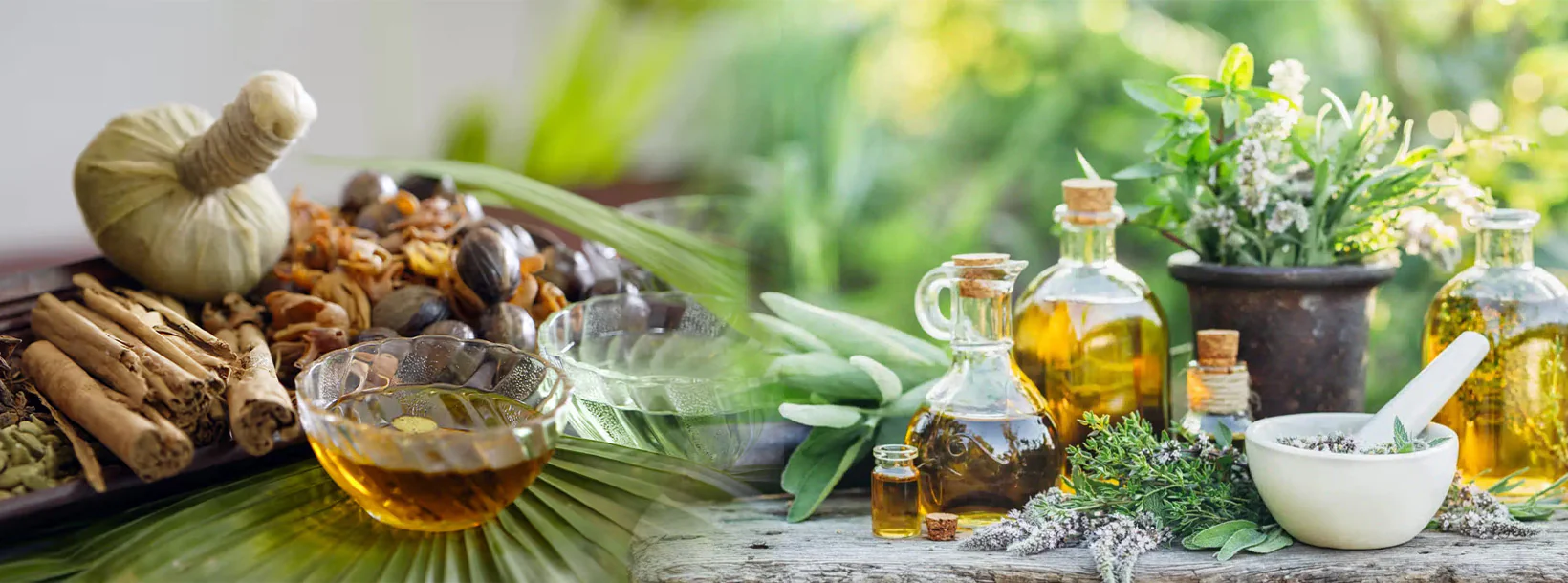
Ayurvedic Medicinal Plants
Sri Lanka's Ayurvedic tradition features a rich variety of medicinal plants used for centuries. Sri Lanka has a rich tradition of Ayurvedic medicine, drawing on its indigenous knowledge and a variety of medicinal plants. Here are some notable Ayurvedic medicinal plants found in Sri Lanka:
Alangium salviifolium
Alangium salviifolium, commonly known as sage-leaved alangium, is a flowering plant in the Cornaceae family. It is also commonly known as Ankolam in Malayalam, Ankola in Kannada, Akola or Ankol in Hindi and Alanji in Tamil. In India, Its mostly found in dry regions in plains and low hills and also found on roadsides.
Sage-leaved alangium is a small, bushy tree offering a dense canopy with a short trunk. It bears fragrant white flowers which have green buds. The petals of the flower typically curl backwards exposing the multiple stamens and a linear stigma distinctly sticking out. The fruits are spherical berry like and red in color. The prominent remains of the calyx can be seen distinctly with a white color. The leaves are simple, alternate, oblong-lanceolate. The stunted branches end up with sharp ends making it look like thorns.
In Ayurveda the roots and the fruits are used for the treatment of rheumatism and haemorrhoid. Externally, it is used for the treatment of bites by rabbits, rats, and dogs. The root-bark is also used in traditional medicine skin problems and as an antidote for snake bite. The root-bark is also used to expel parasitic worms (Platyhelminthes) and other internal parasites from the body. It is used as an emetic and purgative as well.
The wood is said to be hard and close-grained because of which good finishing is possible. It is used to make ornamental work, pestles and rollers and also is good as a fuel wood. The stems because of its sharp ends are used as a spear in Kenya. The twigs are also used as toothbrush in India. It is considered to be good for making musical instruments and for making furniture as well.
Alangium salviifolium is part of the catalog of ayurvedic medicinal plants of Sri Lanka.
-

Ankenda
Acronychia pedunculata -

Beli
Aegle marmelos -

Bakmi
Nauclea orientalis -

Bangwel-geta
Coscinium fenestratum -

Bukinda /Walkinda
Tinospora malabarica -

Bu- kobbe
Allophylus cobbe -

Dodan –kaha
Memecylon capitellatum -

Diyamitta
Cissampelos pareira -

Embul dodan
Citrus aurantium -

Gas nidikumba
Biophytun reinward -

Hintambala
Carmona microphylla -

Goraka
Garcinia cambogia -

Karapincha
Murraya koenigii -

Keppetiya
Croton laccifer -

Kohomba
Azadirachta indica -

Kotikan-bevila
Sida alba -

Kudumiris (Forest paper)
Toddlia asiatica -

Kurundu
Cinnamomum zeylanicum -

Mahakaramba
Carissa carandas -

Muna mal
Mimusops elengi -

Nelli
Phyltanthus emblica -

Puwak
Areca catechu -

Rath mal
Ixora coccinea -

Eepatta / Ruk - anguna
Alangium salviifolium -

Siyambala
Tamarindus indica -

Walangasal / Wal-embilla
Embelia ribes -

Wal Karapincha
Micromelum ceylanicum -

Welangiriya
Paramignya monophylla
Ayurvedic and Herbal
-
 Promoção
PromoçãoSiddhalepa Ayurveda Herbal Balm
Preço normal De R$ 2,00 BRLPreço normalPreço unitário / porR$ 3,00 BRLPreço promocional De R$ 2,00 BRLPromoção -
Lakpura Wildcrafted Soursop (Guanabana, Graviola, Guyabano) Dehydrated Leaves Whole
Preço normal De R$ 18,00 BRLPreço normalPreço unitário / porR$ 13,00 BRLPreço promocional De R$ 18,00 BRL -
 Promoção
PromoçãoLink Swastha Triphala
Preço normal De R$ 12,00 BRLPreço normalPreço unitário / porR$ 14,00 BRLPreço promocional De R$ 12,00 BRLPromoção -
 Promoção
PromoçãoSethsuwa Pranajeewa Oil
Preço normal De R$ 19,00 BRLPreço normalPreço unitário / porR$ 23,00 BRLPreço promocional De R$ 19,00 BRLPromoção

















































